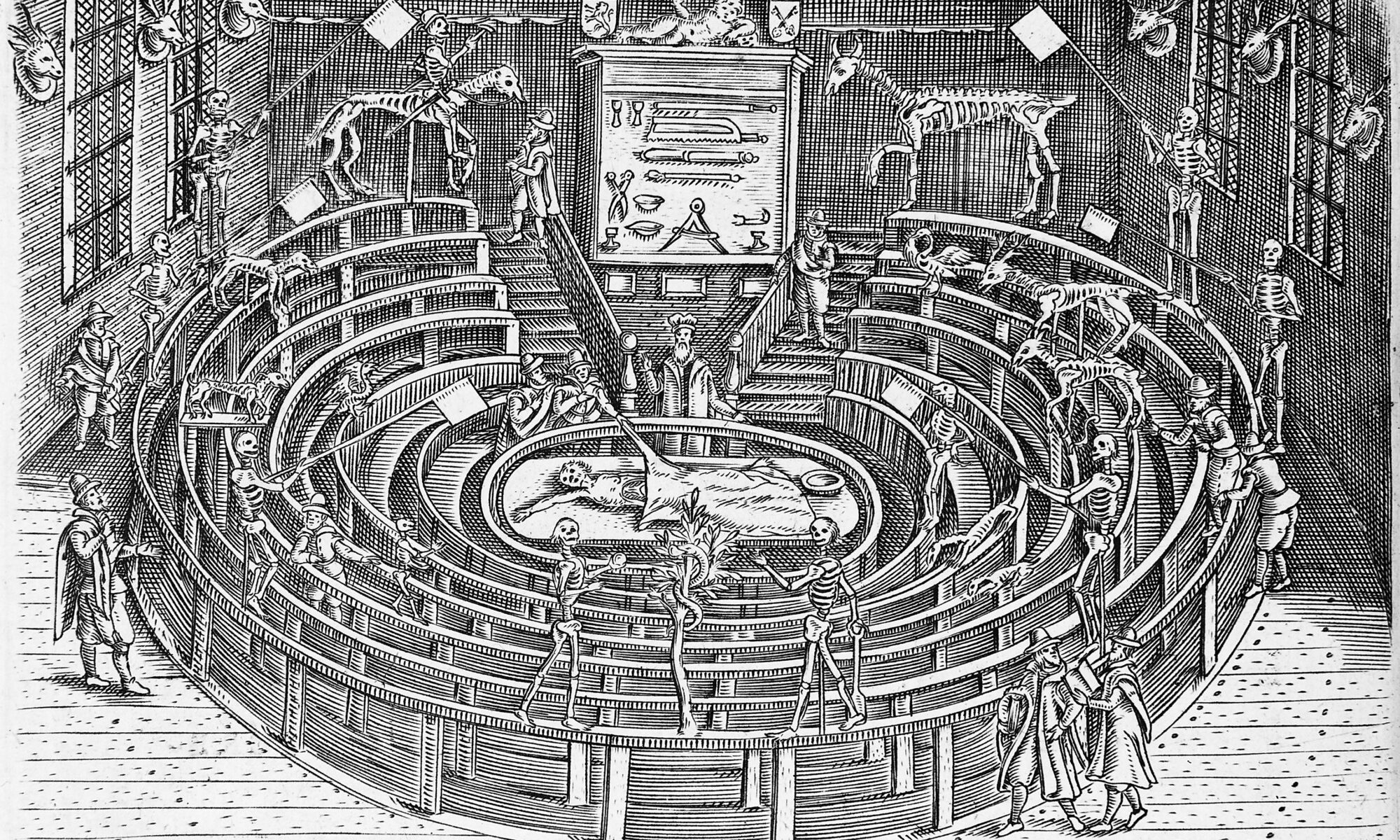
The history of the faculty of Descriptive Anatomy goes back to the times of the Academic Faculty of Medicine and the Royal University of Warsaw (1809–1831). At this time classes were held in the former building of the Jesuit School in the Old Town where a dissecting room, lecture room and anatomical cabinet with a large collection of human and animal preparations were housed within a rather small space. The most famous anatomist was Professor Marcin Roliński who was renowned for his work ethic and diligence, but who was not much liked by his students due to his brusque manner and strictness as an examiner.
After the establishment of the Academy of Medicine and Surgery and the Main School (Pol. Szkoła Główna), the Faculty and Department of Anatomy was headed by Ludwik Maurycy Hirszfeld (1814–1876) who had been educated in Paris and excelled in the art of making anatomical preparations. He also authored an atlas of the anatomy of the nervous system in both a French and English version. He also continued his work during the time the university functioned as the Imperial University of Warsaw, but after several years was replaced by Mikhail Dmitrievich Chausov, a graduate of the Military and Medical Academy in St Petersburg, who was very badly perceived by the students in Warsaw. However, this did not prevent him from twice being appointed dean of the Faculty of Medicine in the years 1887/1888 and 1900/1901. The next heads of the faculty: Semyon Nikanorovich Jashchynsky, Tikhonov and Bushmankin did not really distinguish themselves with any outstanding academic achievements, although Jashchynsky did have a considerable number of publications.

Up until the beginning of the 20th century, the anatomical theatre was located in the vicinity of the former seat of the Child Jesus Hospital on ul. Zgoda: ‘…it was an amphitheatre with ordinary, old wooden benches which were rather shabby; and at most it could accommodate up to 100 students, and since there were no more than thirty on our course, it seemed rather empty. When taking notes, you had to hold your notebook on your lap and write up your notes in a hunched up position. There were boards at the ends on either side, only on very top tier, where you could spread out your notebook and lean on your elbow. I also sat here. The viewers were separated from the professor by balusters behind which was a large oval, kidney-shaped table with a top imitating white marble. The table rotated on its base, so the specimen that was placed on it could be easily seen by the students without them having to move out of their seats.’ When the hospital was moved to a building in the vicinity of ul. Oczki, Nowogrodzka and Teodora (today’s ul. Chałubińskiego) the department acquired a new seat in what in those times was the very modern Anatomicum building.

The Department of Descriptive Anatomy was established in November 1915 in what was then a university in which classes were held in Polish. It was the first entity of the Preparatory and Medical Division(from 1916 the Department of Medicine) in the reborn University of Warsaw. At that time the seat of the department was located in the Anatomicum building at ul. Chałubińskiego 5. Throughout the interwar period the department was headed by Prof. Edward Loth (1884–1944), one of the most outstanding Polish anatomists and anthropologists. Furthermore the famous surgeon, Professor Leon Kryński, lectured on the urogenital system while Józef Grzybowski – younger brother of the renowned dermatologist, Marian Grzybowski – taught surgical anatomy.

The department was very well equipped. Apart from laboratories, a room for the preparation of skeletons, basements with tanks for preserving corpses, a fine library, an X-Ray machine for the study of osteology, an epidiascope (opaque projector) for displaying enlarged reflections of materials, and above all the world famous Anatomical Museum established by Professor Edward Loth, which contained one of the richest collections of preserved great apes and soft primate parts. Unfortunately many of these collections did not survive the Second World War.A few years after the war, the destroyed Anatomicum building was reconstructed. The work of Professor Loth, who died tragically during the war, was continued by the next generation of anatomists: Roman Poplewski, Witold Sylwanowicz and Ryszard Aleksandrowicz in this extremely important place for academic medicine in Warsaw. Today the Department of Normal and Clinical Anatomy, headed by Professor Bogdan Ciszek, is responsible for continuing the heritage of the Department of Descriptive Medicine led by professor Edward Loth.

